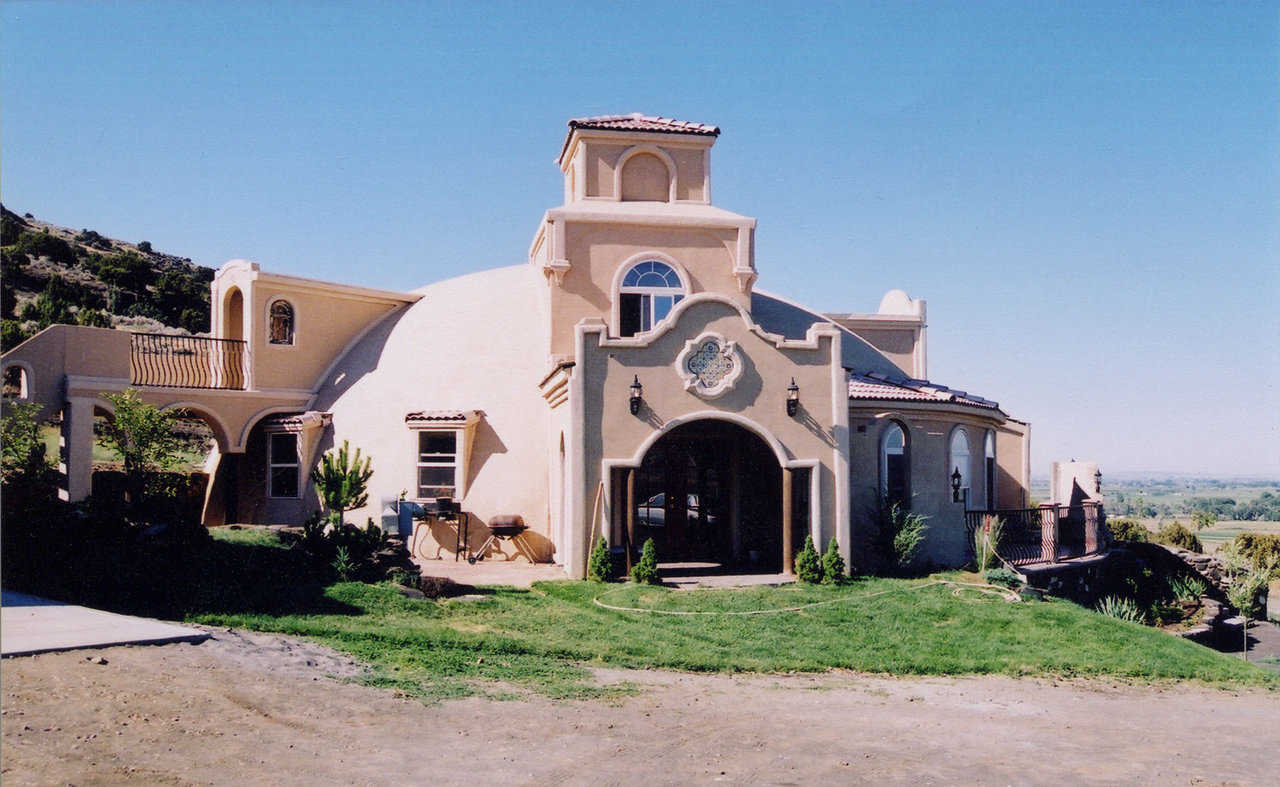Atalaya del Vulcan
Darryl Cunningham, a 49-year-old project manager for Dome Technology, Inc. of Idaho Falls, Idaho thinks that his dome construction experience has led him to believe two things. He says, "Right now, most people love the inside of a dome, and they love the benefits of a Monolithic Dome — its strength and energy efficiency — but most are still a little shy about living in what they perceive as an igloo-shape house.
“I’m also convinced,” Darryl continues, "that most men really don’t care where they live. I think the only reason that we’re not still living in caves is because we have wives. The wives do care about where they live and what it looks like, and we husbands want to stay married.
“My wife is part of that 95% of mainstream Americans who are not really ready to live in a dome. So, our approach to a dome home was a little different.”
For Darryl, his wife Cindy Sue and their four of seven children still living at home, that little difference resulted in Atalaya del Vulcan, a spectacular Monolithic Dome home, modified and designed in the Mission Revival style of architecture.
In Spanish, Atalaya del Vulcan means watchtower of the volcano. The Cunninghams chose that name for their dome-home because a bell tower is one of their home’s prominent features, the structure is near a volcano, and they just like the name.
Experience makes a difference
Darryl’s construction experience dates back to his high school days when he worked with his father, who owned an urethane company in Weatherford, Texas. He says that he has always been employed in construction, has managed his own company and has built “lots of commercial stuff, including shopping centers, medical clinics and stores. My dad and I have done tilt wall construction, shotcrete construction, block construction — you name it.”
Some ten years ago, Darryl got interested in domes through a brother of his, a doctor who wanted a dome and who just happened to be living in Payson, Arizona while Dome Technology built four Monolithic Domes there for the Payson School District. After several calls from his brother, urging Darryl to contact Dome Technology so they could tell him how to build domes, Darryl called several times and talked with both Barry and Randy South, the owners of Dome Technology.
Those conversations resulted in a life-altering exchange of information. Darryl got an overview of Monolithic Dome construction and the Souths got an overview of Darryl’s extensive construction experience. Result: Dome Technology hired Darryl as a project manager, and during the past nine years, he has supervised various dome projects throughout the United States, Puerto Rico and Mexico.
Planning his own Monolithic Dome home
All that experience served Darryl well when it came to designing Atalaya. He says, “When we first started planning this house, we knew we wanted a hybrid. We wanted a Monolithic Dome home that didn’t look like a dome. My wife did not want people approaching the home and immediately seeing a dome. She wanted them to see a house with a dome, not a dome-house.”
Apparently, Atalaya accomplishes that. “Most people who visit tell us that they didn’t realize this was a dome,” Darryl says. “And within two miles of here, we have four other dome houses, so most of our visitors have seen dome houses.”
Built on a 2-acre lot in a unique, prestigious subdivision called Rustler’s Hideout in Menan, Idaho, Atalaya’s 4200 square feet include a Monolithic Dome with a 60-foot diameter, two floors, twelve rooms, a center court and an atrium with a waterfall and a decorative concrete tree.
Building Atalaya del Vulcan
In his spare time and with the help of Cindy Sue, five daughters and one son, Darryl built Atalaya. It took 14 grueling months because, according to Darryl — the project’s designer, builder and slave laborer — they did “everything in this house ourselves except laying the carpet upstairs. We did the construction, poured the concrete, put the cabinets in, made doors, made railings and did the stucco and tile.”
The Cunninghams purchased their Airform from Monolithic and built Atalaya using standard procedures of Monolithic Dome construction with some modifications. While those modifications alter the exterior and interior appearance of the dome, Darryl believes that they do not compromise its innate qualities, such as energy efficiency. For heating, Darryl installed a thermal hot water system that circulates through pipes and warms the dome. It works well. During the three years the Cunninghams have lived in Atalaya, their winter heating costs have averaged a measly $50 per month — despite Idaho’s months of freezing temperatures.
A compromise
So while some dome-purists might object to a compromise that disguises a dome, the Cunninghams feel they have the best of both worlds: a Monolithic Dome, or what Darryl calls “the future of building,” and a classic Spanish Colonial home that would appeal to a huge number of modern Americans.
A major modification that produced the exterior look Darryl wanted for Atalaya’s front included what he describes as “a big hole in the shell. The whole front wall of the living room which is 22 feet long was a 20′ × 2′ × 12′ opening. In that opening, we built a vertical wall right up off the ring beam. So, when you’re in the living room, looking out one of its three arched windows, there is no dome wall. It’s a vertical, not a sloping, wall.”
The interior
Modifications were used for the interior as well. Darryl says that they have a “lot of dome wall” in their 27-foot-long master bedroom. To soften its dome look, Darryl used a decorative treatment that called for the construction of a corbel or shelf projecting from the dome shell. The corbel supports log beams crossing the ceiling and creates a double curve that obscures the dome’s natural curve.
When applying the shotcrete, Darryl says, “We trowled and half-floated our walls so the inside of the outer shell wall is finished exactly like the interior walls of each room. We used an acrylic stucco on all our walls. That gave us the southwestern look we wanted on the inside as well as the outside.” Stucco applied on the dome’s exterior, over its Airform, and on the inside walls will also hide any hairline cracks the dome may develop.
Darryl says they paid special attention to the window and door openings. These they “molded out and shaped with concrete and stucco so they’re very finished. There are no rough edges.”
One-of-a-kind furnishings
As for furnishings, the Cunninghams shopped carefully for the antiques, hand-painted sinks,tiles and other fixtures, many of which they purchased in Mexico. Luckily, Darryl also got some windows, doors and a gate because one of his brothers happens to be a Hollywood movie producer. He called Darryl one day and offered him the abandoned fixtures of a studio set for a movie titled The Mexican.
Since its completion, Atalaya has generated a lot of interest. Darryl says, “We’ve had as many as 27 different people stop by just on a Sunday afternoon to ask if they can walk through our house. We have a lot of visitors. In fact, we seldom have a weekend when no one stops by.”
During the 2002 Monolithic Dome Home Tour, 400 people visited Atalaya. In 2003, many of those who had toured Atalaya the year before, returned, bringing friends with them.
First in Rustler’s Hideout
Atalaya del Vulcan was the first home built in Rustler’s Hideout, a private subdivision with 61, two- to four-acre lots — each with a spectacular view of the Snake River, and/or the surrounding mountains and valleys.
Formed on buttes, created by volcanic rock that came up through water and made craters, the two-mile length of Rustler’s Hideout has a beautiful, half-mile-long pasture at its center.
But despite its abundance of natural beauty, Rustler’s Hideout isn’t just another pretty place. As its name suggests, it’s a legendary site.
According to the story most often recalled, in the summer of 1883, outlaws were rustling livestock and hiding it on the east side of South Butte — an area that gave them a clear view of much of the surrounding countryside. On the northeast part of the butte, the rustlers notched holes in the rock and spanned a small area with wood to make a three-sided shelter. There they could sit and watch, protected from the elements.
As for the cattle, they herded them into a crater — a giant bowl-like depression below the valley floor. There the livestock stayed hidden from view until the rustlers had a sufficient number to sell.
Nevertheless, the day came when a rancher, hunting for his lost cows, spotted the rustlers’ booty and reported his findings to the sheriff, who arrested the rustlers.
Note: This article was originally written and published in July 2004
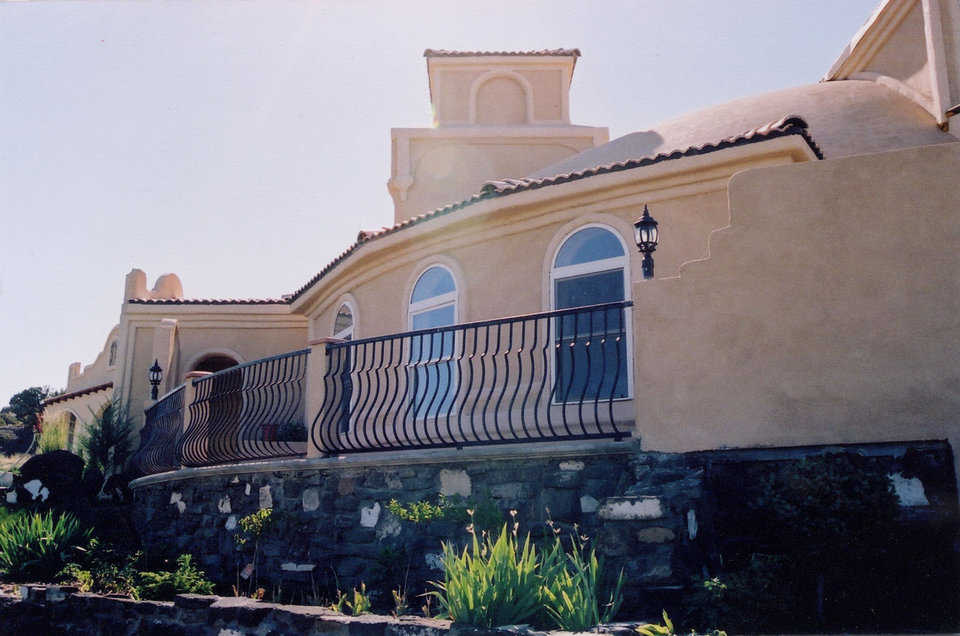
Decorative Rail — Balcony with an eye-catching rail creates an outdoor spot for rest and relaxation. (Darryl Cunningham)
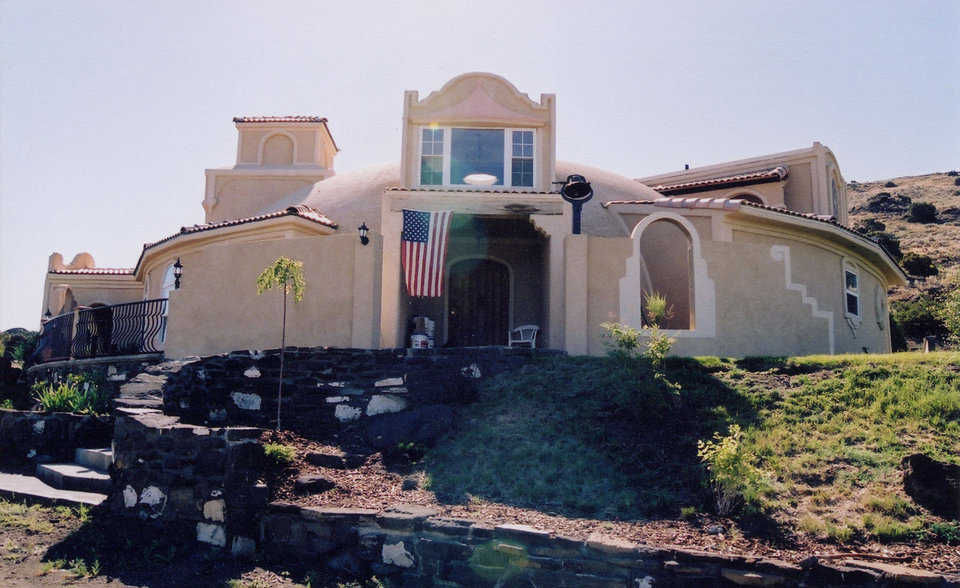
In Spanish — Atalaya del Vulcan means watchtower of the volcano and this dome-home is near a volcano. The Cunningham family did much of the interior and exterior work themselves. (Darryl Cunningham)
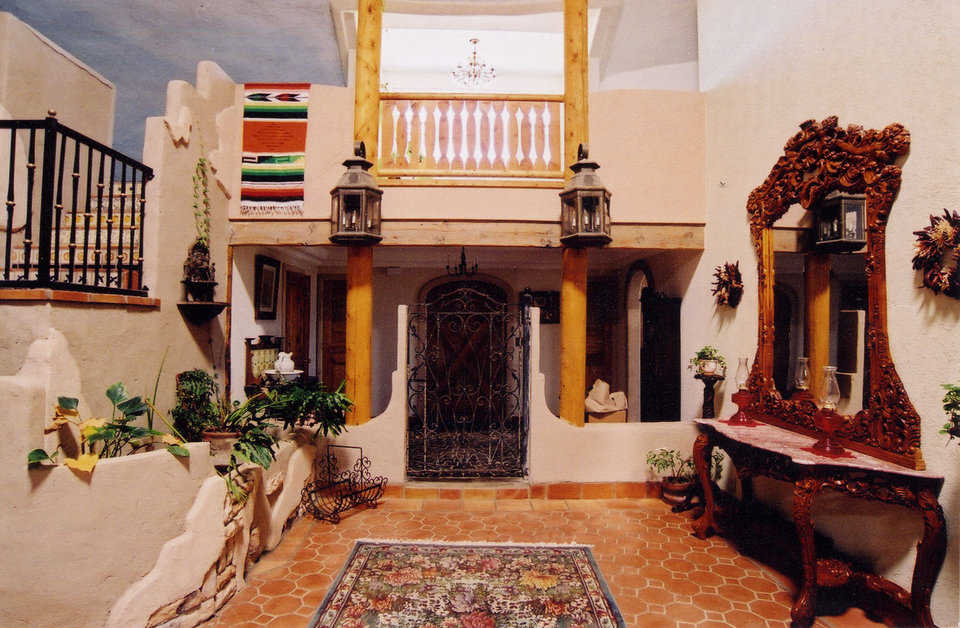
Elegant Entryway — It astonishes, impresses and welcomes visitors. (Darryl Cunningham)
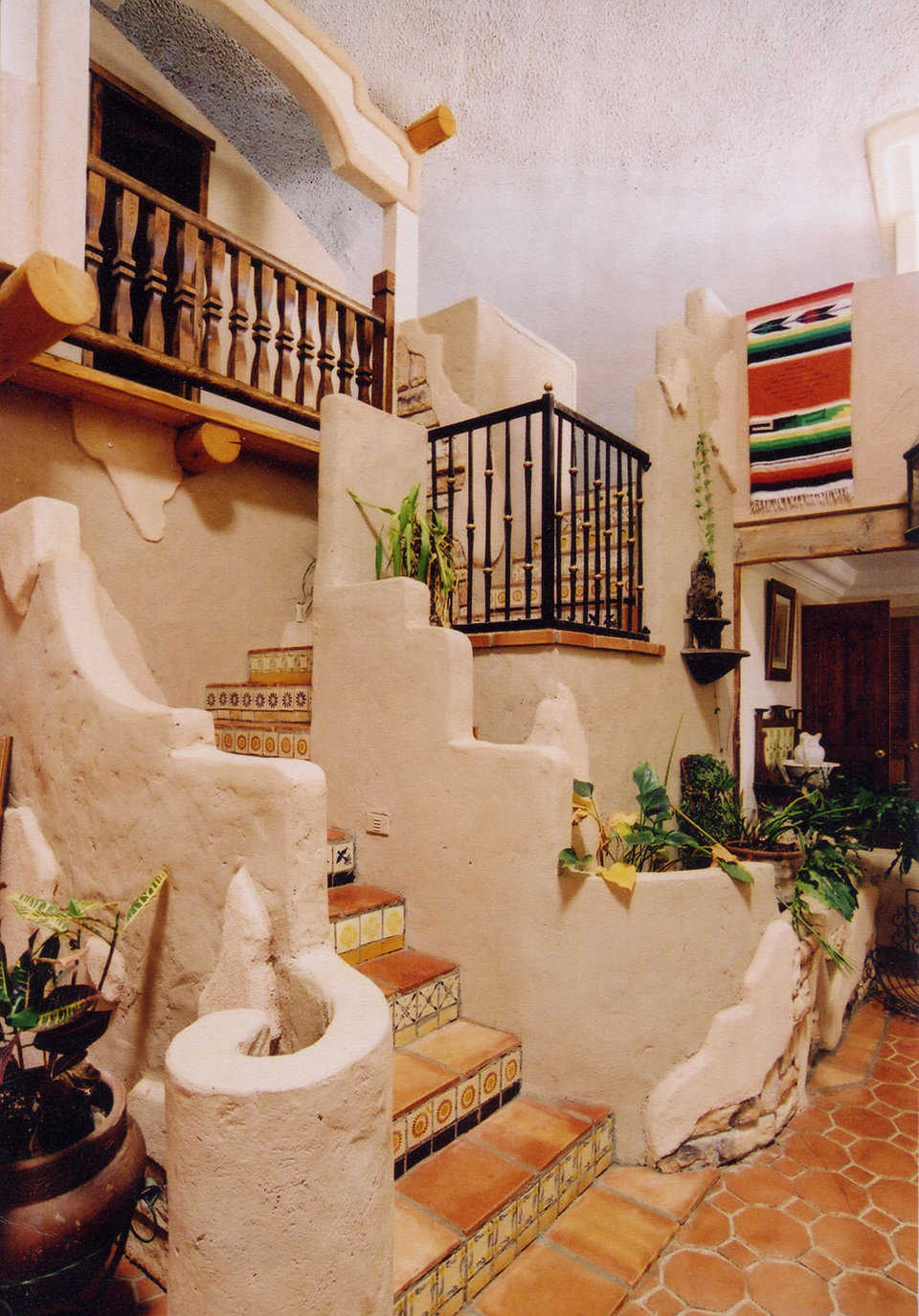
Stairway — Its Mosaic tiles lead to the upper level living areas. (Darryl Cunningham)
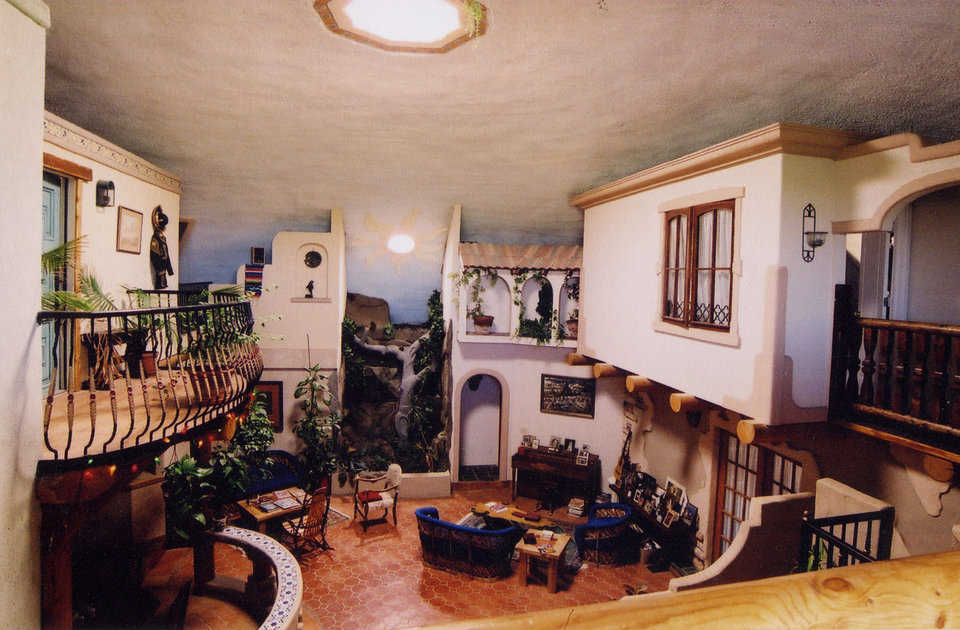
Spacious — Atalaya’s 4200 square feet include a Monolithic Dome with a 60-foot diameter, two floors, twelve rooms, a center court and an atrium with a waterfall and a decorative concrete tree. (Darryl Cunningham)
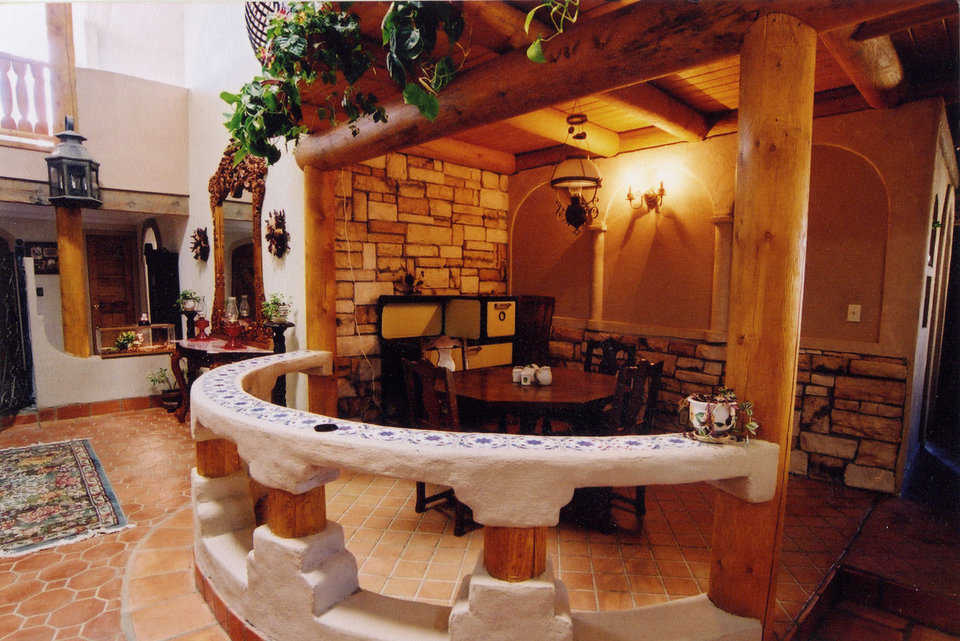
The Breakfast Nook — It’s set off the main living area by a circular divider made of concrete and wood. (Darryl Cunningham)
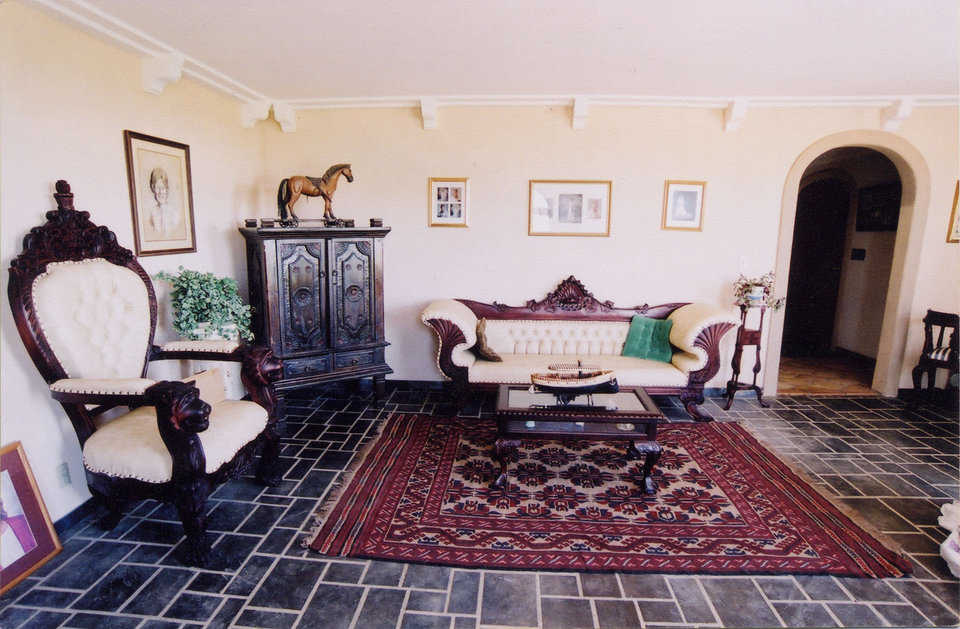
The Living Area — It features Spanish-style furniture, stamped and stained concrete flooring and arched doorways. (Darryl Cunningham)
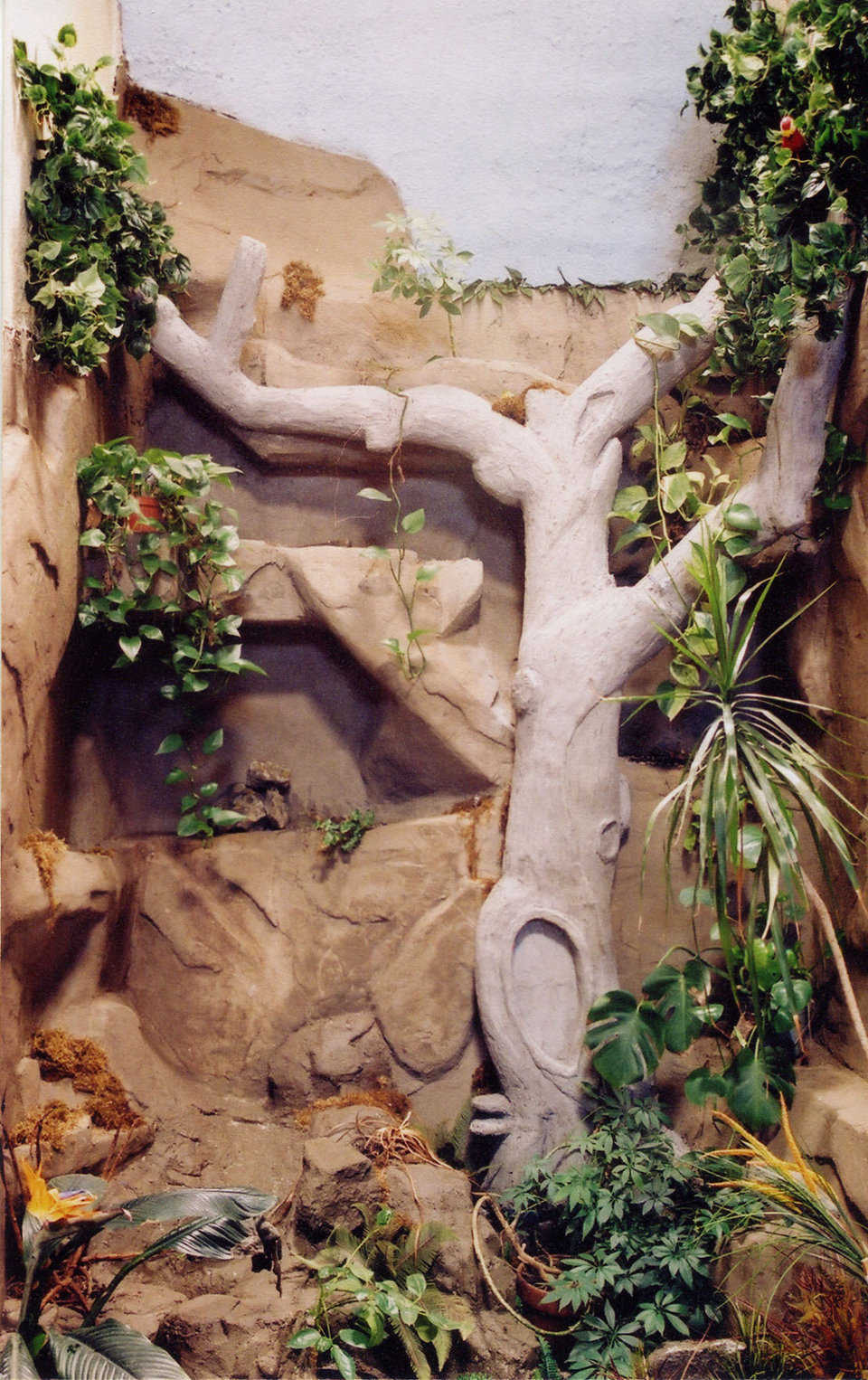
Hard Wood — This concrete tree adds a decorative element to the skyshell’s interior. (Darryl Cunningham)
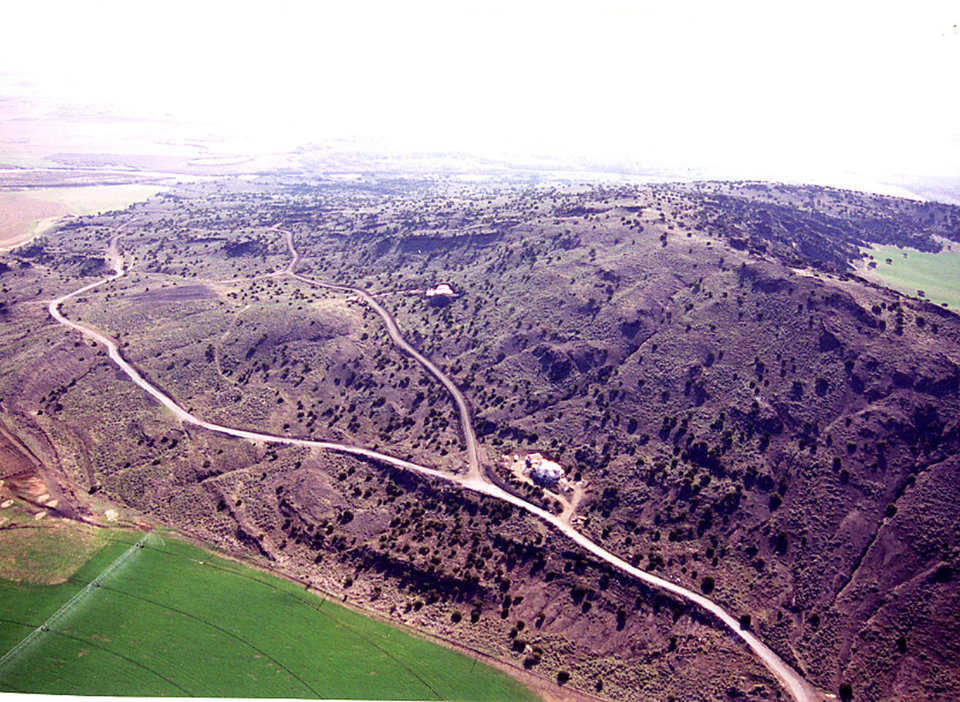
Location, Location, Location - Atalaya del Vulcan is built in Rustler’s Hideout, a private subdivision with 61, two to four-acre lots, each with a spectacular view of the Snake River, and/or the surrounding mountains and valleys. (Darryl Cunningham)
